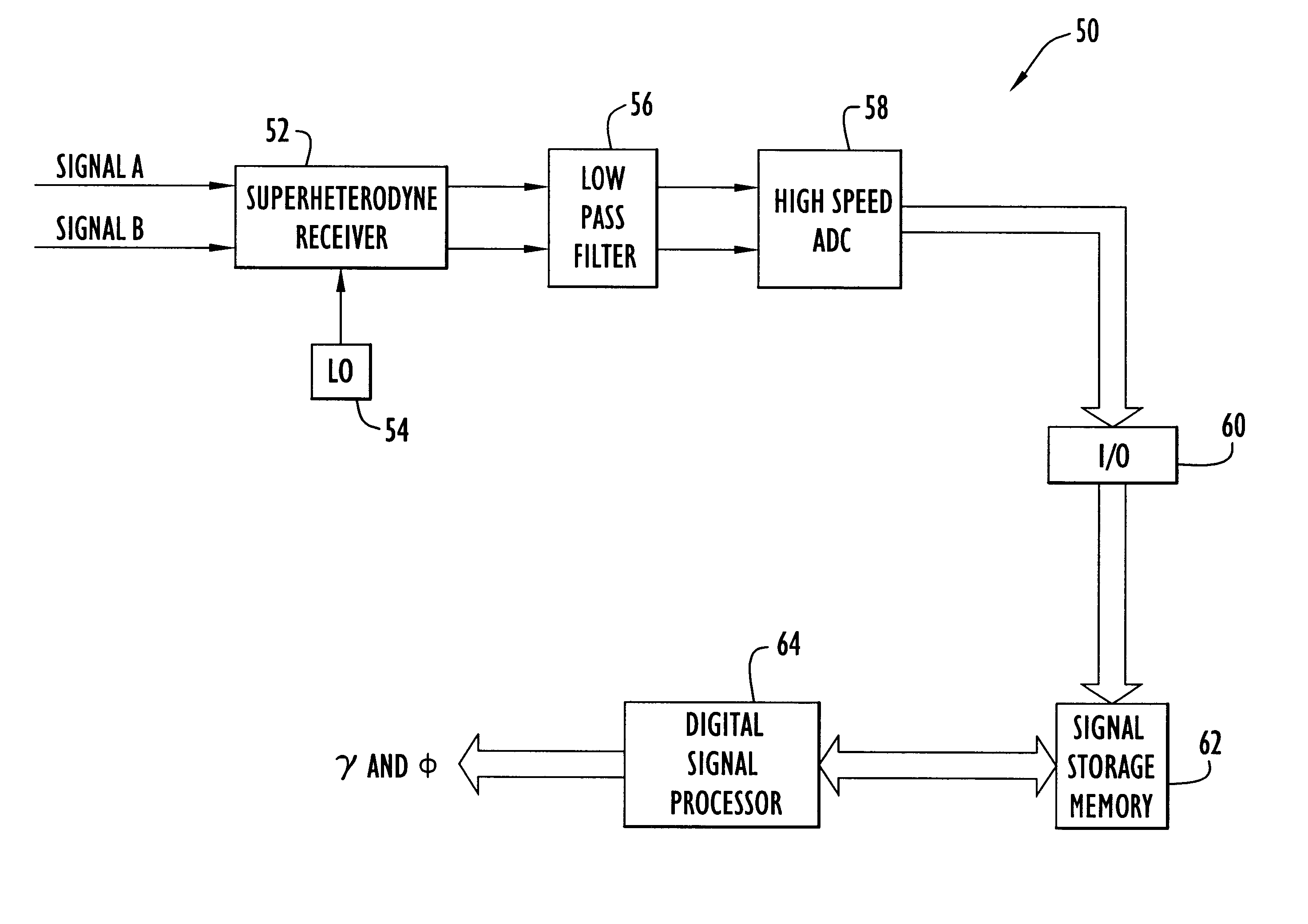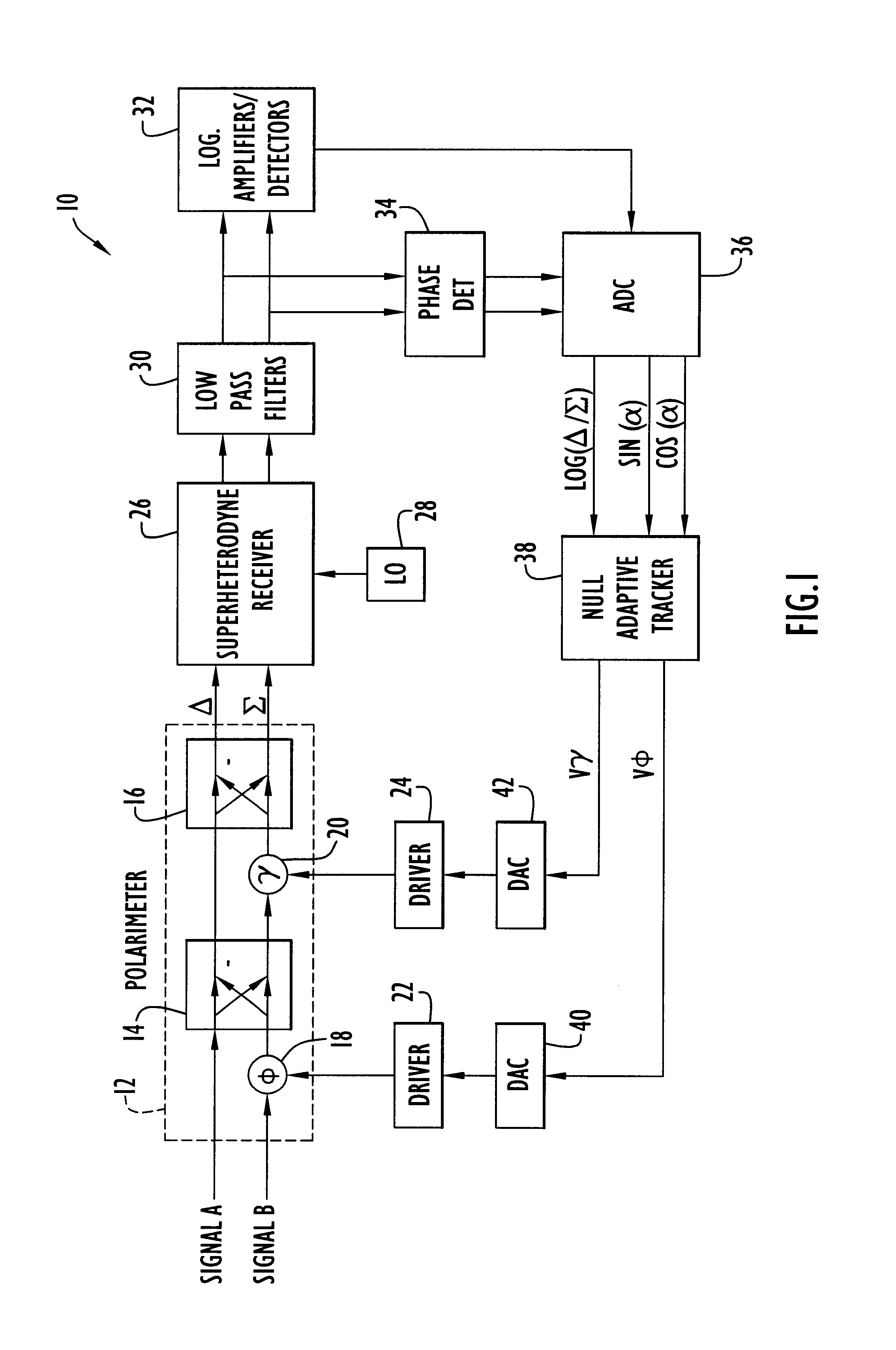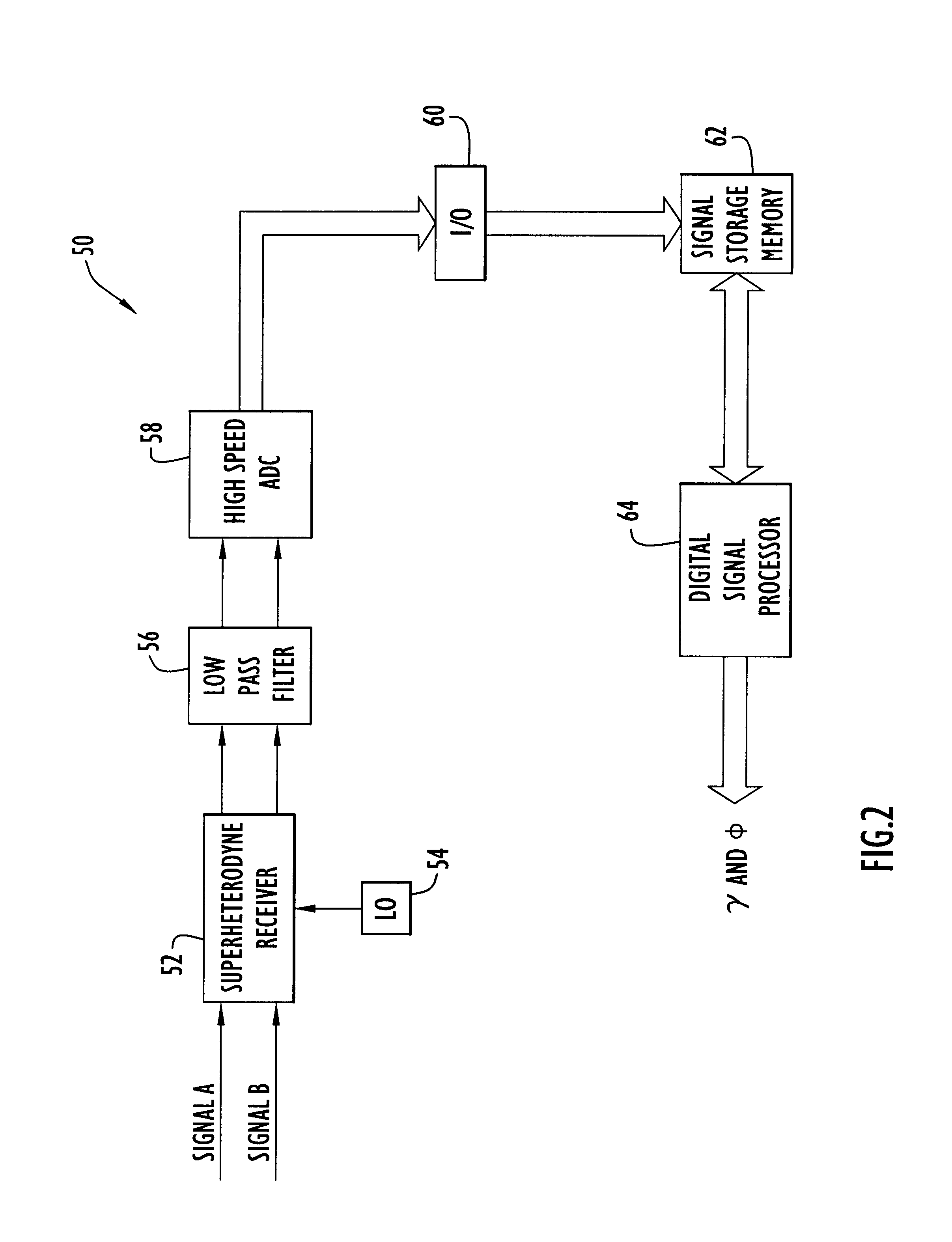Digital polarimetric system
- Summary
- Abstract
- Description
- Claims
- Application Information
AI Technical Summary
Benefits of technology
Problems solved by technology
Method used
Image
Examples
Embodiment Construction
[0030]The following detailed explanations of the figures and of the preferred embodiments reveal the methods and apparatus of the present invention. A general null adaptive polarization tracking technique is described in connection with the block diagram of an analog polarimetric system 10 employing a feedback loop shown in FIG. 1. System 10 includes an analog polarimeter 12 which separately receives the horizontal component (signal A) and the vertical component (signal B) of a received signal, such as series of radar pulses. The perceived polarization of a received radar signal is a function of the orientation of the antenna of the EW system; thus, the portion of the received signal constituting the “horizontal” component and the portion constituting the “vertical” component is dependent upon the present orientation of the EW antenna. For example, an airborne EW system will typically receive a vertically polarized signal from a ground-based radar. How the EW antenna “sees” this ver...
PUM
 Login to View More
Login to View More Abstract
Description
Claims
Application Information
 Login to View More
Login to View More - R&D
- Intellectual Property
- Life Sciences
- Materials
- Tech Scout
- Unparalleled Data Quality
- Higher Quality Content
- 60% Fewer Hallucinations
Browse by: Latest US Patents, China's latest patents, Technical Efficacy Thesaurus, Application Domain, Technology Topic, Popular Technical Reports.
© 2025 PatSnap. All rights reserved.Legal|Privacy policy|Modern Slavery Act Transparency Statement|Sitemap|About US| Contact US: help@patsnap.com



